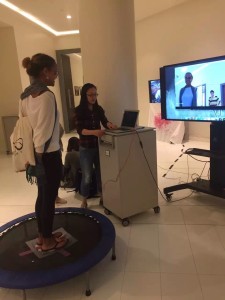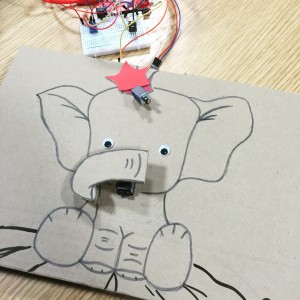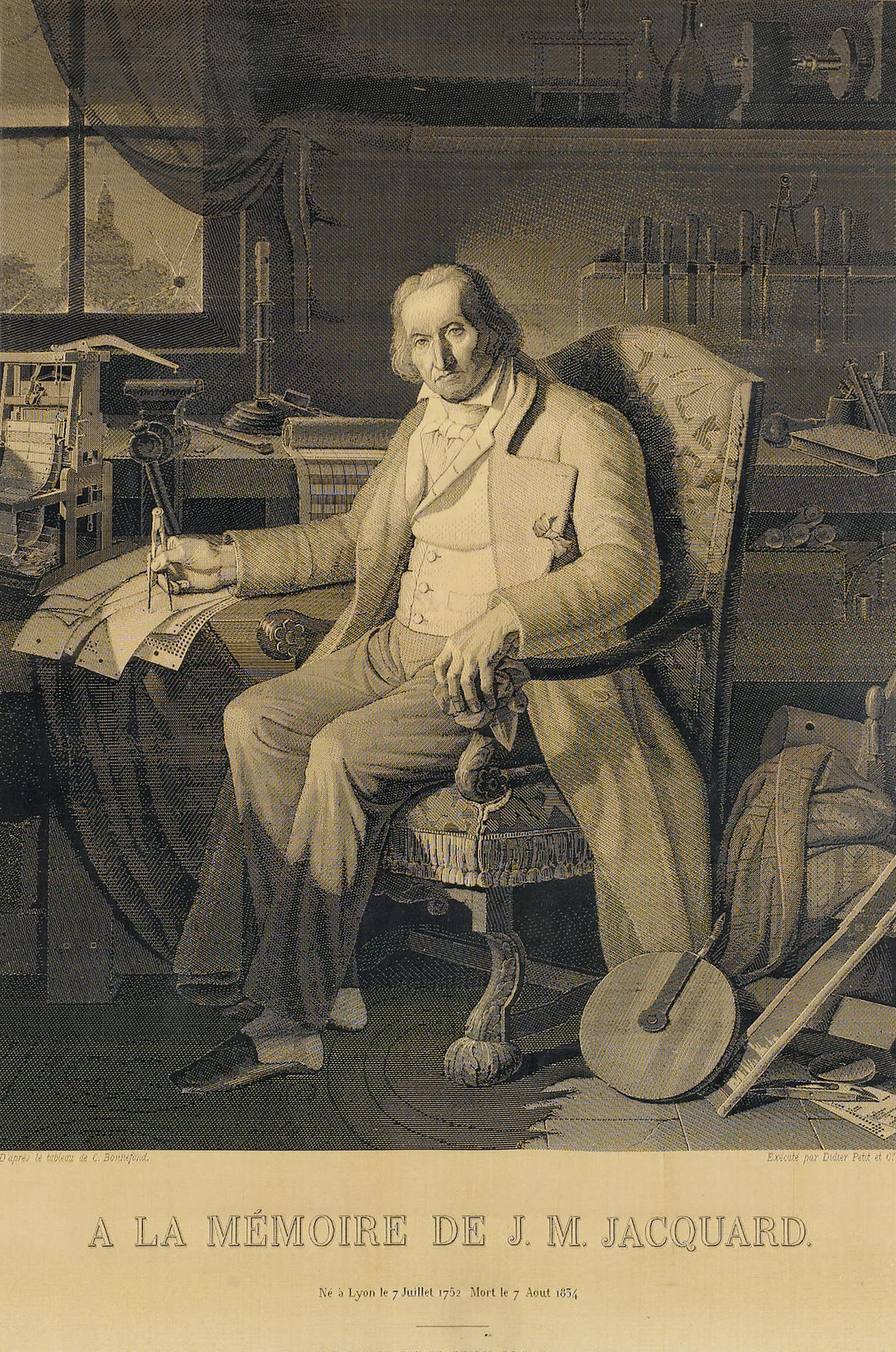I came up with the idea to make an elephant whose nose can swing and crown can move. I used a servo motor and solenoid individually for the elephant’s nose and crown. Once the device is connected to power, the crown will stretch forward and backward while the nose will start to swing from left to right and then left.
Tag: Fall 2015
Final Project – Jumping Man!
Khalas, our game is finally working. Jumping Man is inspired by the hidden game in Chrome. In the Chrome game, the dinosaur is continuously running and jumping to avoid crashing with the obstacles. Similarly, our game involves a lot of jumping in order to survive. Even though computer games are always exciting, we want to add more excitement by creating a physical controller for the game. The physical controller is built on a big trampoline, and we use a pressure sensor to measure the jumping movement.


Computational Media
My original inspiration to join this class comes from the IM final show in Shanghai. When I saw many amazing works that students made and played with them were super fun. I also want to make something like theirs, so I am so lucky to get into Intro to IM class in Abu Dhabi for my first study away semester. As I came here, everything was new and seems a little bit overwhelming for me. And the first assignment gave me a chance to start to notice and observe interactions in our living environment. Continue reading “Computational Media”
Computational Media
Computational media have, in the very least, increased the possibilities of expression, reception of information and interaction.
A la mémoire de JM Jacquard + Processing
Most cultural products are mediated through computers; from the beginning of the creative process of conceiving an idea, to production, distribution, and consumption computers play a crucial role in the way we understand media. With computers, media becomes more malleable increasing the possibilities of re-imagining existing content, creating several iterations with the same data, and of visualizing data in new ways. Today cultural products are the outcome of the process of reshaping data and rethinking through it. My final project, for example, by building on Borges’s ideas of language in his short story Tlon, Uqbar, Orbis Tertius re-imagines the language of Tlon with the use of data stored in Cloudant, and Merriam Webster’s dictionary.
Continue reading “A la mémoire de JM Jacquard + Processing”
What Computational Media Can Do
Is Computational Media important? Why?
Computational Media in Context of Contemporary Art
Before I answer the question whether computational media is important, we need to look at what “computational media” is. When you type in “computational media definition” to Google search, you can find a link to an ITP course called Introduction to Computational Media that defines what computational media is in their first week of classes. The professor of this class tries to break the word down into “computation” and “media”. Wikipedia defines computation as “finding a solution to a problem from given inputs by means of an algorithm” and media as “plural form of medium” and “a truncation of the term media of communication, referring to those organized means of dissemination of fact, opinion, entertainment and other information.” By definition, computational media doesn’t necessarily need to involve computers, as long as you derive a result using some sort of predefined steps of action from a given set of input. To me, computational media seems very much like what generative art is. Generative art refers to “art that in whole or in part has been created with the use of an autonomous system” which is generally “one that is non-human and can independently determine features of an artwork that would otherwise require decisions made directly by the artist”.
Continue reading “Computational Media in Context of Contemporary Art”
Computational Media + Sharjah Assignment
Is Computational Media important and why?
On Computational Media
I’ve been told consistently by my relatives how I need to exercise both sides of my mind: the creative right side, and the analytical left side. But instead of trying to find a blend of the two, I thought my choice stemmed between the black and white logical fields, and the colorful, ambiguous artistic world. Now I’m realizing that computational media and the interaction between art and technology is not only a new option to integrate both sides, but it’s essential to the progression of technology as a whole.
I see technology as a medium for communicating artistic ideas into an applicable format. Companies using design to improve the interaction between people understand the value of visual appeal. Art creates an experience behind engineered objects. Art communicates and transmits ideas through media, and technology adds to the functionality of this interaction. When it comes to the importance of fields like Interactive Media, I’ve found that I’m not the only student searching to infuse art into the technological world. As the technological world progresses, the demand for simplicity in technology is more and more imperative. We engineer for convenience, to enable, and to open doors for people to study and learn more about the world. The tools we use to do so demand art not only for ease in functionality, but for the communication art offers. We can use art to ask questions and consider ambiguity, and we can use art to build on opportunity in other fields.
I’d argue computational media is only in its earliest stages for the potential it has both in art and in computer engineering. But the more its fostered, the more doors I think it opens up for artists and engineers to learn skills they wouldn’t have otherwise considered. I saw a future holding a paintbrush, and I am, except I’m writing code to make a paintbrush on a computer. If nothing else, the skills learned by studying computational media can be applied to any new fields. I didn’t realize mathematicians needed to be creative, nor did I realize artists need to know how to properly manipulate sine and cosine on 3D planes to create amazing designs. It’s like we’ve just realized peanut butter and jelly work super well together.
Arguably computational media may not be considered as necessary to other computer scientists or artists as it does in my eyes. But from seeing the opportunity computational media offers me, I’m happy to lock myself away in a lab for several hours with a group of other interactive media artists. I’m happy to make amazing, beautiful, broken things in that lab, and if nothing else, I find enough intrinsic motivation to continue pursuing computational media until the world agrees with me of its importance.
Devin Curry — “Working Rhythms”
Check this piece out here. Basically the idea is that by moving around plastic sculptures a user can create new rhythms. The piece consists of a number of universal bases. By changing out the sculptures, the user can change the nature of the beat being played. Visually, this piece is pretty cool. Each of the sculptures is made of translucent plastic, and when placed in a base, lights up from the bottom. The face of each of the sculptures has some inlaid shapes whose color matches that of the light. The beats are goofy sounding. I feel like if I saw this piece in a gallery, I would play around for a minute or so, and then peace out pretty quickly; it’s scope is deliberately limited. It’s interactive, but not game changing.


